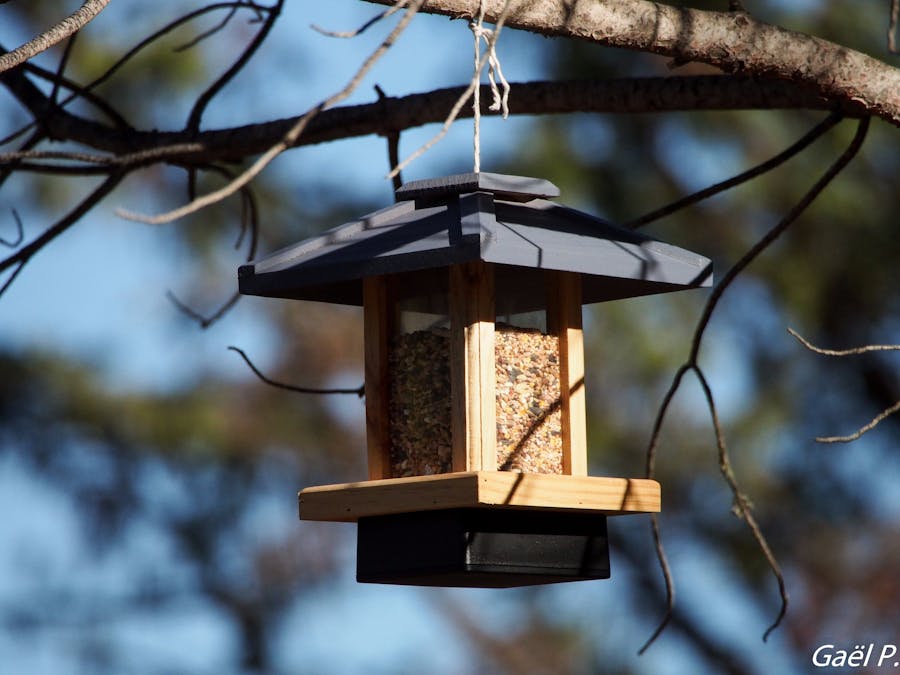What is more lovely than helping these lovely birds getting food during cold winters ?
When you are a geek, you also want to get more information about them and the first thing to know, is how many times a day they would eat and if they need more food depending on the weather.
This project introduces you to the future of the bird feeders. More features will be suggested at the end of the presentation if you ever need more ideas.
How does it work ?Every time a bird lands on the bird feeder, the Arduino MKR FOX 1200 will send a SigFox message including the current temperature in Celsius and the current percentage of humidity.
On the SigFox backend, two requests will be made when a message is received :
- All the data are stored in the database located on Thinger.io
- A tweet is sent using IFTTT from the SigFox backend. The twitter account is : https://twitter.com/Iot_Birdfeeder
Before going to the details of the project, I would like to show the installation and the results on Twitter and Thinger.io.
1. Hardware schematics
The schematic is quite simple.
2. Sensors
- Weather sensor - BME280
The weather sensor that I use is the BME280 from Bosch. It is simple to use, has a I2C or SPI access (I chose I2C), low power, and small dimensions.
I am using this device to get the current temperature, humidity and pressure.
- Vibration sensor
To detect the presence of a bird, I decided to use a vibration sensor. It is an open collector output and has a potentiometer to select the sensitivity of it. I have bought it on Amazon France : https://www.amazon.fr/gp/product/B00AYB1F7C/ref=oh_aui_detailpage_o06_s00?ie=UTF8&psc=1
- Rain drop sensor
To avoid the undesired vibrations due to the rain, I added a rain drop sensor. It gives two information, if it is raining or not (as digital input) and the level of rain (as analog input).
If it is raining, the bird feeder will "sleep" for 20 minutes.
- Food level sensor - HC-SR04
During the testing phase, it happened that I had no detection anymore after a couple of days. First I thought my IoT bird feeder had an issue but when I checked it out, it was just missing food.
So I decided to add an Ultrasonic Sensor (HC-SR04) for that. It is definitely not the best low-power device on the market (15mA comsuption under 5Vcc) but I had it at home and it is quite easy to use. In the future I can imagine using a better device.
Now I can relax at home and check the food level from time to time.
3. Source Code
In order to make the bird feeder autonomous, I decided to add a solar panel and a 3.7V LiPo battery linked with a battery charger (TP4056).
More details might be added here.
SigFoxOn the SigFox backend, two POST requests will be send when it receives a new message.
- The first POST request is sent to IFTT in order to tweet. This is the easiest way I have found to tweet from the there.
- It stores the data in a database located on thinger.io.
In order to tweet from the SigFox backend, the easiest way to do it was using IFTTT.
When the SigFox backend receives a message, it sends a POST request with the humidity and the temperature to IFTTT which will format the message and tweet.
Thinger.ioI wanted to store the data on database to display them on a web page and I think Thinger.io is a pretty nice and easy way to do it.
You can find the Thinger.io dashboard here : https://goo.gl/V3FNR7
At the moment, it displays the temperature and humidity when the latest bird came to eat.
Future featuresThere is always room for improvement. If you have any ideas, feel free to contact me.
3D printing
I am thinking about making a 3D printing which may includes location for the sensors, easy to refill.
Improve the server management
Because it was easier and faster, I decided to use Thinger.io to store the data and display a dashboard.
Therefore, it has some limitation, I can't display on the dashboard the number of entries in the database (aka. number of birds which landed on the bird feeder), I can't send notifications to phones, etc.
A complete control of the backend could be done. For example :
- Custom database
- Web service to decode the SigFox messages and take actions
- Develop a custom web page to see all the statistics
- Develop smartphone apps connected to this database


















_3u05Tpwasz.png?auto=compress%2Cformat&w=40&h=40&fit=fillmax&bg=fff&dpr=2)
Comments
Please log in or sign up to comment.